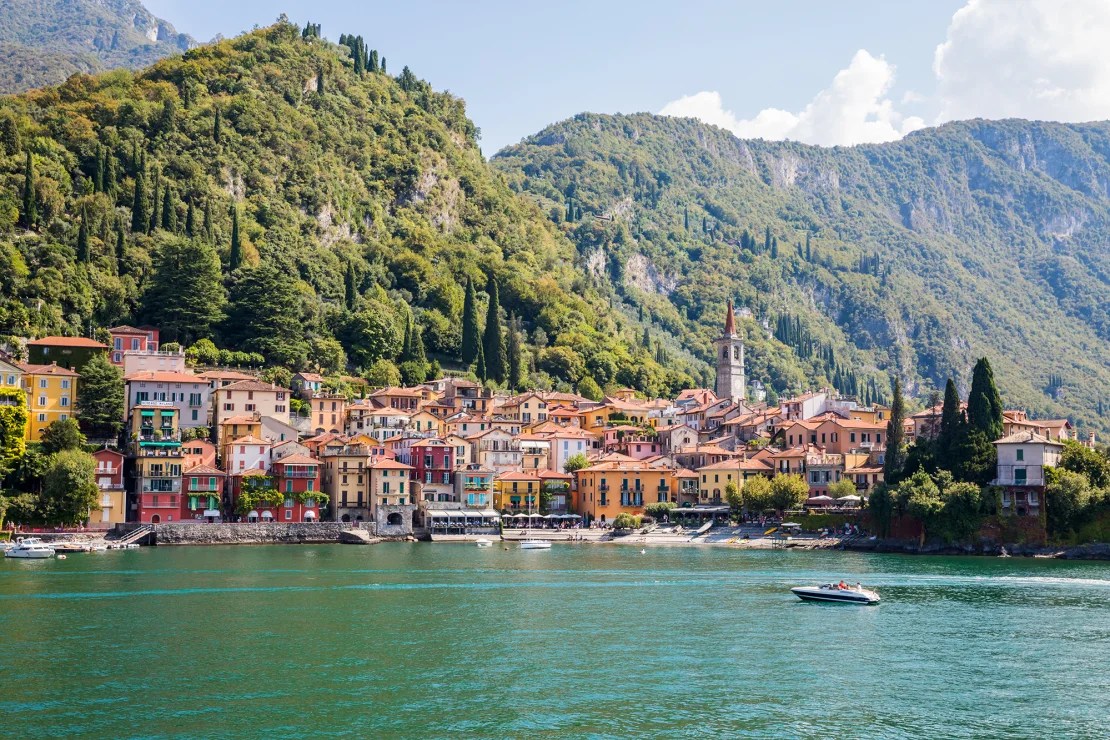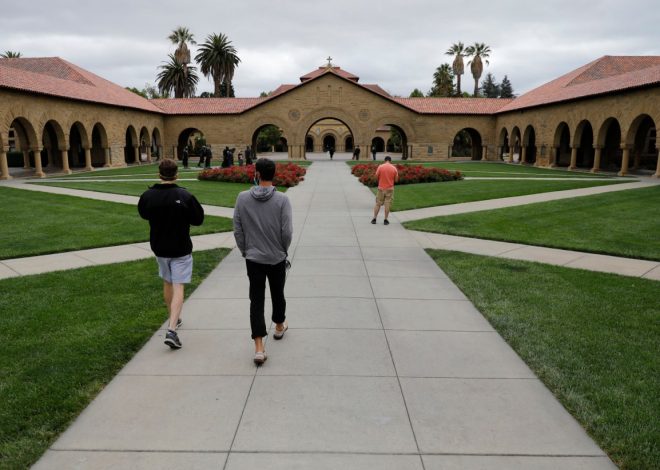
‘Nothing less than a miracle:’ How one Bay Area woman snagged Italy’s new digital nomad visa
It’s the key to your very own slice of dolce vita: a visa that allows remote workers to up sticks and move to Italy. But although the Italian government’s digital nomad visa launched in April 2024, so far there have been few accounts of people securing one.
For those willing to invest time, effort and not inconsiderable amounts of money, the rewards can be life-changing, according to one lucky recipient.
Italy’s digital nomad visa scheme was first announced in 2022 and launched in April 2024. Fans of the country were quick to dream of a life working remotely: a meeting with a perfectly prepared cappuccino, lunchbreak on the beach, and an afternoon of working hard — before clocking off for a well earned spritz.
RELATED: Considering a move abroad in 2024? These are the 10 best countries for expats
But six months on, Italy has not been overrun with foreigners Zooming from the piazza, and many would-be movers say that there is so little information about the visa out there, they are beginning to doubt it even exists.
Well, it does — and one woman from California is the person to prove it. Chelsea Waite, a self-employed PR, relocated from San Francisco to Milan in July.
Her new life — confirmed for a year — sees her living in a chic apartment in one of the most elegant parts of the city, working remotely for her California-based business, and getting out and about to meet everyone from the baristas at the cafes near her apartment to fellow migrants. She’s learning Italian — but has found that in Milan, at least, it’s possible to start making a life in English.
That life is one she has long felt drawn to — but had feared she would never achieve, having been turned down for a visa to Italy in the past.
This time, with persistence and overpreparing, she has struck gold — and says she is living her Italian dream.
‘I was meant to live here’
Chelsea Waite moved to Milan in July and is already enjoying the dolce vita on Lake Como. (Chelsea Waite via CNN)
Waite fell in love with Italy on her first visit in 2017, when she took a trip to Florence and Tuscany.
Unlike many foreigners who have the romantic idea that they can just up sticks and move to Italy, Waite knew it was as difficult to emigrate to the Bel Paese as it is for those dreaming of moving to her native United States.
“I really fell in love with everything Italy had to offer, but knowing I’d have to find sponsorship or employment, it didn’t feel feasible,” she says.
Apart from anything else, she had a full-time job in San Francisco at the time.
But then came the pandemic. In 2020, she transitioned to working remotely. Two years later, she went it alone, starting her own PR company working with tech startups.
San Francisco was, of course, the obvious place to be.
Then, in 2023, she visited Milan for the first time.
“I had this deep feeling that I was meant to live here,” she says.
On her return, she got in touch with an immigration attorney — but they had bad news.
“They said that because I was self-employed it was even more challenging now.
“I needed to find an Italian company to become my client and have a collaboration contract saying it’d be beneficial to their business if I was in Italy, but it wasn’t something I was able to pursue.”
Waite parked her dream.
And then came April’s government announcement. After two years of speculation, the digital nomad visa was finally launching.
‘Nothing less than a miracle’
Milan, people and fashion shops in Galleria Vittorio Emanuele II with people. (Giuliano Benzin/iStock Editorial/Getty Images)
Related Articles
They decided to leave the Bay Area and never looked back
Bay Area exodus: Half of Bay Area residents say they plan to leave
Renting vs. owning: What’s fair for Californians?
The Bay Area housing affordability crisis doesn’t exist in much of the US — so why aren’t people moving?
Walters: California’s economy lags behind other states — here’s why it’s so sluggish
“I was so excited,” says Waite, who immediately did a deep dive into how to get a visa.
Not only was there very little information; getting an appointment at an Italian consulate to apply for a visa is notoriously difficult.
Waite looked every day for six weeks, drawing a complete blank. But in late May, she had a breakthrough. “I randomly looked at a different time of day and it brought me into a portal,” she says. Although the website warned of a minimum four-month wait time, she saw an available slot at the San Francisco consulate for 10 days later.
So she booked it — imagining it more as an initial appointment to get enough information to reapply in the future. Details on the visa and how to obtain it were extremely thin on the ground, and she thought the best way to find out exactly what she needed to apply was to apply — and risk getting turned down.
“The lack of information was the biggest thing I struggled with,” she says now. “There’s no one online sharing their experience, nothing showing what you needed to receive the visa. I knew 10 days was a tall order — I would need a lease [on an apartment], health insurance, tax returns, client contracts and certification of my degree.”
Yet — call it luck, call it destiny — everything came through. Her father, who works in real estate, connected her with an agent in Milan which was ready to take a punt and sign a contract with someone who might not be able to take it up. She paid a deposit of three months’ rent, trusting that she’d be able to claw it back should she not get the visa.
She bought health insurance, and got her degree certified — it took a couple of days, even though other people she knows have taken months to get theirs.
She got documentation showing that she’d been working remotely since 2020, and added her contract with her previous employer, plus all her current client contracts to “not only to show that I have active clients but that I’m consistent and reliable.”
She added her tax returns — the required minimum income set by the government is around $32,000, but she had heard on the grapevine that in practice, to get approved for a visa you’d need an income of triple that amount.
And because she describes herself as a chronic over-preparer, she added background checks from her state and the government, as well as her resume.
In total she took a package of 120 pages of documents to her appointment on June 7 of this year.
“They said, ‘We’ll’ let you know.’ Processing time would be seven to 14 days,” she says. “But 10 days later I had my visa.
“By nothing less than a miracle, everything fell into place.”
Uprooting across the world in 48 hours
Chelsea Waite with her best friend from San Francisco visiting Milan this Summer. (Courtesy Chelsea Waite)
It was the result she’d been dreaming of. But the path of true visa love never runs smooth. It was June 17 when she received the visa; and on June 19 she’d be leaving for London, where she had a month-long trip planned.
Most people would have decided to deal with the Italy move after returning from London, or even canceled that trip across the pond.
Not Waite –— she decided to go straight to Milan from London. That’s right — she packed up her life in 48 hours. Not only that, but she also arranged for her two rescue dogs to fly out with her.
Waite has not been back to San Francisco since receiving her visa and jetting off to London. Earlier in September she “officially moved out” of her old apartment, hiring an assistant and enlisting friends to clear her things out for her.
She had also done a “purge” in between her appointment and receiving confirmation of the visa in a bid to “think positive.”
Her suitcases with her last belongings were shipped by her friends and arrived in September in Milan.
Meanwhile, Waite has swapped her “astronomical” one-bedroom apartment in San Francisco for a two-bedroom apartment in Milan –— and is saving $1,500 per month.
“I love Milan,” she says. “I work in tech, and I think it’s the most business-minded city in Italy. I definitely see myself staying here. I’ve been able to meet a number of expats and foreigners and am beginning to create a community.”
Friends of friends (and friends of friends of friends) have come in handy, she says. And she is ruthlessly putting herself out there, attending workshops, gym classes and chatting to people in her local café to make new connections.
She’s also starting to explore Italy and beyond, and has already made several trips to Lake Como (an hour from Milan), dropped down to Florence and Tuscany, and has even made a couple of flights to Greece.
The digital nomad visa is for once year, after which it can be renewed for a standard permesso di soggiorno, or permit to stay. After five years, she can qualify for permanent residency; and after 10, she can apply for an Italian passport. Under the visa rules, she pays a 5% flat tax on her income to Italy, and also pays a proportion of taxes in the US.
“So far my experience is extremely positive. I’ve made some new friends, other expats, and live in a wonderful apartment complex with very kind neighbors,” she says. Assuming those rose-tinted glasses don’t fall off in the next year, she plans to apply for a renewal.
The trick to snagging the visa
The Duomo di Milano (Milan Cathedral) with the Piazza del Duomo (MaxBaumann/iStockphoto/Getty Images)
So why does it seem to be so rare to get the digital nomad visa? Waite is in various groups on social media for those applying but has yet to hear of another successful applicant. CNN has asked the italian foreign ministry how many visas have been issued so far, but has yet to hear a reply. The Italian consulate in London has issued 13 to British residents.
While she says she’s “extremely grateful” that she managed to snare a visa, she believes there are ways that applicants to make themselves look most attractive to the authorities.
Confirming a longterm accommodation is crucial, she says: “At first I thought maybe I can rent an Airbnb for a few months, then figure out permanent accommodation, but that wouldn’t suffice.” Applicants will have to take a leap of faith and stump up a deposit to get a signed contract – but will need to make sure the contract has a clause allowing them to cancel before moving in, and prepare to have to fight for their deposit back if they don’t get the visa.
She also thinks applicants should demonstrate a minimum salary well in excess of the official figure of 25,500 euros or $27,000. As part of her paperwork, she showed evidence that she had met or exceeded that target for the past three years.
Finally, she advises getting your degree and professional qualifications certified. “It’s a huge requirement to assert your professional standing and expertise,” says Waite –— whose degree is in PR, the same as her job. Coming overprepared gives you the best chance for success, she says.
As is obvious from the above, this isn’t for the fainthearted. It’s not for the cash-strapped, either — Waite paid $124 for her visa application alone and reckons the whole cost came to between $5,000 and $10,000, including getting her documents certified, splashing out on background checks, and putting down the apartment deposit.
But if you don’t succeed the first time, you can always try again, she says — with knowledge of what went wrong the last time. In the meantime, Waite is working on an e-guide for prospective digital nomads perplexed by the lack of clarity about the visa.
“Italy is excited to have these new individuals come into the country but it’s not as simplistic as made out to be,” she says.
Despite her travails to get the visa, Waite says it was worth it. “There are high highs and low lows, and it was very emotional,” she says of the application process.
“Just stay positive.”
The-CNN-Wire
& © 2024 Cable News Network, Inc., a Warner Bros. Discovery Company. All rights reserved.


